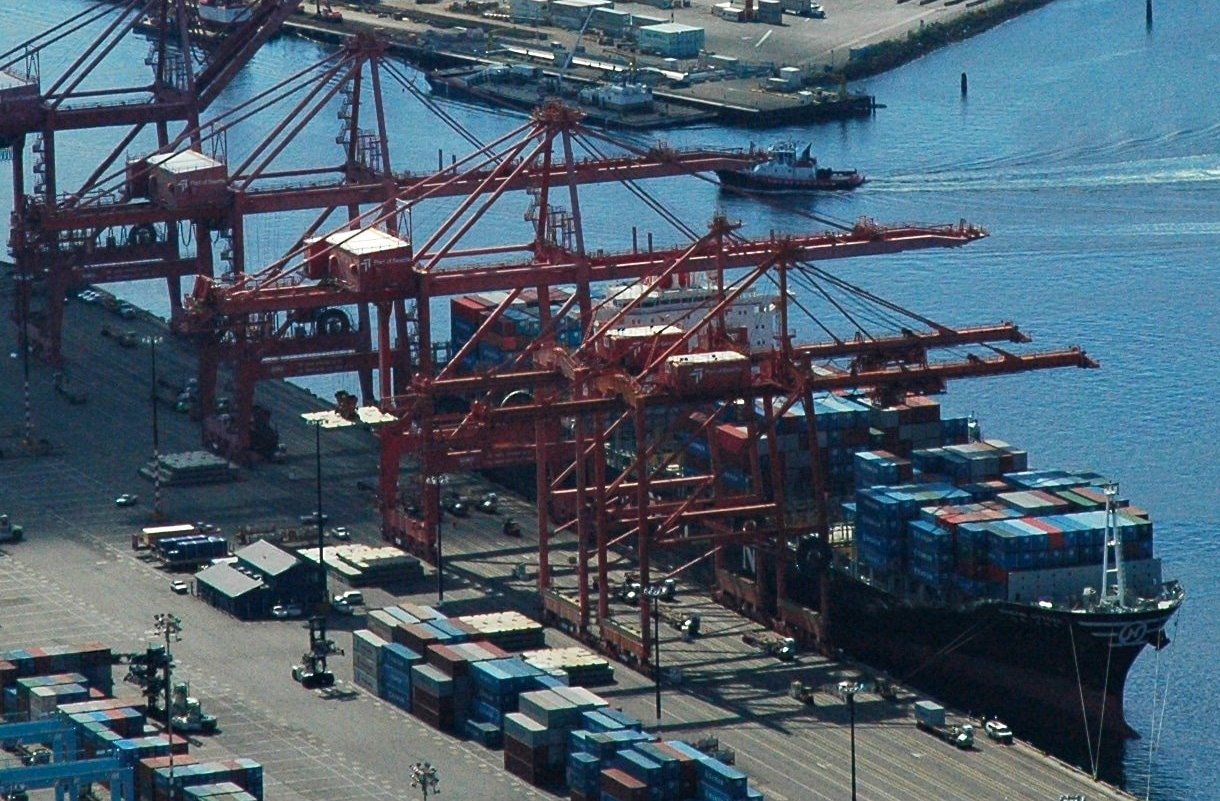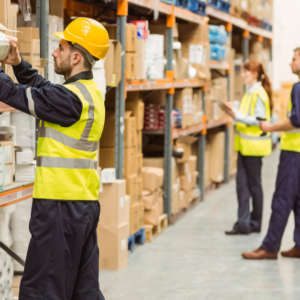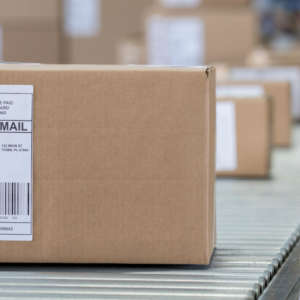Especially with ecommerce, we take for granted is how easy it is to buy things. Whether in-person at the grocery store or ordering from your favorite website, it’s expected that the goods we want just sort of… appear out of nowhere.
It was only until the pandemic and its supply chain issues thereafter that many of us realized how crucial logistics is to keeping everything running smoothly. But a package showing up on your doorstep or food on the shelves at your favorite supermarket is only one link in the supply chain.
Chances are that, unless you work in the logistics industry, transloading isn’t something you’ve ever heard about. But without it, the modern convenience of expecting your favorite things to go from the store to your door could never exist. In this article, we want to explore what transloading is, why it’s so important, some benefits of transloading, and factors to consider when looking for a transloading company to partner with.
But before we get into the details, let’s start with the basics.
What is Transloading?
If you’re shipping something a great distance, especially over international borders, chances are your shipment will encounter transloading. Also known as cross-docking, transloading is when a shipment is moved from one mode of transportation to another – such as from a ship to a train or a truck to a plane. By switching modes of transportation through a transloading facility, shippers can optimize their supply chain to better match the strengths of weaknesses of different transportation methods.
For example, if a shipment of goods arrives at a port by boat, but the final destination is inland, transloading allows for the transfer of ocean cargo from a ship in a 40′ container to trucks with 53′ trailers. This eliminates the need for long-haul trucking from the port, in turn reducing transportation costs while improving delivery times.
Additionally, transloading facilities often offer storage, consolidation, and sortation services to further improve flexibility and supply chain efficiency. This allows you to fit more cargo into larger containers which will save money and increase fuel efficiency.
It’s important to note that transloading is often confused with transshipment, which is a legal term that defines a shipment’s origin and destination. For instance, if shipments of coal on a train come from multiple coal mines to then be put on a single ocean freighter and mixed together, that shipment can no longer be considered transshipped; a consolidated shipment of coal from multiple origins can no longer be tracked accurately since it was all combined into a single load. It can, however, be considered transloaded as it moved from train to ship.
Benefits of Using Transloading
If you’re a small business that ships regionally, transloading might not be too important for you. However, if you’re a larger business or shipping large volumes of goods internationally or across great distances, here are a few reasons why you should consider using transloading in your logistics processes:
Reduced Shipping Costs
With the sheer volume planes, ships, and trains can transport, you can leverage economies of scale to save money on shipping costs. This is done by consolidating your shipments more effectively, using larger shipping containers, or transloading with larger vehicles instead of shipping directly with smaller ones. Transloading this way can also help you better optimize transportation routes by selecting routes and modes of transportation that make sense while factoring in time and cost savings.
For example, let’s say you want to send goods from Seattle-Tacoma to Indianapolis by truck which costs about $5,000 USD per truck. You have three options:
- A 20′ container (can fill 33 cubic meters)
- A 40′ container (can fill 67 cubic meters)
- A 53′ container (can fill 108 cubic meters)
If you have 100 cubic meters of cargo, choosing a single truck with a 53′ container effectively halves your costs instead of choosing two trucks, one with a 20′ container and one with a 40′ container. Interestingly enough, this is the inverse of dimensional weight where you want to choose packaging that fits what you’re shipping as well as possible — but in doing so, you can pack these large shipping containers more densely, double-dipping with how much money you can save.
Greater Flexibility to Adapt to Market Changes
By diversifying your shipping, your business can be more flexible and adaptable in the face of market volatility. With so many supply chain challenges that have cropped up in the past few years, transloading allows you to side-step some problems such as port delays or rapidly-changing demand.
For instance, if you’re sending 2 20′ containers and 2 40′ containers that arrive at a port at Seattle-Tacoma, you don’t need to determine the destination right away when they’re shipped out from their origin. You can make that decision at a transloading facility — such as the port — and then decide how to split the shipment up, such as some of it going to Phoenix, and the rest to Indianapolis. This allows you to save both money and time while giving you finer control of your logistics.
Increased Sustainability
Transloading isn’t just about choosing the best transportation methods to save on time and money. Because you’re selecting for the most efficient modes of transportation while consolidating shipments, your business can also minimize its carbon footprint. Of course, that also helps save money on fuel, labor, and other costs associated with inefficient resource use.
Improved Efficiency
All of these benefits add up to improved overall efficiency with your shipping process. Less risk of damage, faster deliveries, better shipment consolidation, and planning better routes with better vehicles all add up to time and money saved and happier customers.
Expanded Access to New Markets
Last but not least, one of the greatest benefits of transloading is helping businesses extend their reach into new markets beyond the backyard. This is done by giving businesses a wider range of transportation options in cost-efficient ways. Even 100 years ago, flying the sheer volume of cargo we do across great distances was unheard of. Now, a product in Los Angeles can end up in Berlin in roughly 13 hours by plane. Shipping trucks, no matter how fuel efficient, still can’t bridge those two cities on their own. Transloading, however, helps overcome gaps like, say, the Atlantic Ocean.
Factors to Consider When Choosing a Transloading Partner
Before you start packing shipping containers and finding ways to shove your goods off at the nearest dockyard, there are a few factors to think about when looking for a transloading partner.
Here are a few of the big ones:
- Location: ideally, you want to find a transloading partner that’s relatively close to you (especially if you’re initially shipping by truck) or at least along the route you’re trying to establish.
- Experience: transloading is serious business; ensuring you’re partnering with the right companies that know what they’re doing is crucial to avoiding delays, damage risk, and other headaches.
- Equipment & Technology: not all transloading facilities are made equal. For instance, if you’re shipping t-shirts, running them through a facility that handles grain from nearby farms isn’t the best move. Instead, look for transloading partners that handle the type of cargo you’re moving.
- Clear Communication: communication across the supply chain is important so you, your business, and your logistics partners can coordinate and account for any delays. A lack of communication can cause way more problems than we can list here so be sure to find a partner who communicates regularly and clearly.
- Willingness to Build a Partnership: business in general is all about building strong, trusting relationships and logistics is no different. Especially if you’ll be relying on one another for years to come, starting a relationship off on the right foot is important to getting the work done (not to mention saving time, money, and stress for everyone involved).
Find a Transloading Partner with UCanTrade
With so many transportation options, figuring out how to implement transloading into your logistics can be overwhelming. Doubly so if you’re still trying to find a partner you can trust. However, the helpful logistics experts here at UCanTrade are happy to point you in the right direction and pair you up with transloading partners that fit your needs. Feel free to contact us or send in a service form, and we’ll get you (and your products) to the right place.



